#Paris Palace Theatre
Explore tagged Tumblr posts
Text

Costume de Theodora pour Sarah Bernardt, Petit palais exhibition, Paris
#fashion#dress#mode#robe#haute couture#beautiful#love#couture#beauty#moda#paris#france#sarah bernardt#museum#petit palais#palace#parisian#costume#theater#theatre#exhibition#exposition fashion exhibition#lovers#golden#or#silver#shiny#shine#bright#model
105 notes
·
View notes
Text
A Week In The Life | Squeezing In The Holiday Shows
New year, new format! Bit of a lengthy one but it's been a busy week ---> A Week In The Life | Squeezing In The Holiday Shows
Hi! Hello! Happy New Year! I’ve really struggled with the blog in the past few months, so think it’s time for a brand new format. I’ve basically turned into a very scatty theatre reviewer, where I’d only review shows if I absolutely had to. And even then, they’d go up SO late because I’d struggle to find the motivation to actually sit down and review them. So I’m hoping this new format will allow…

View On WordPress
#a little life#Alexandra palace theatre#ami okumura jones#audiobook#Barbican#barbican centre#Bugsy Malone#Danielle deadwyler#Danielle fiamanya#Disneyland paris#dominion theatre#elf the musical#I wanna dance with somebody#it&039;s kind of a funny story#mandela#Mei mac#my neighbour totoro#Naomi ackie#ned vizzini#simon lipkin#southwark playhouse#till#west end musical#who&039;s holiday#young vic
3 notes
·
View notes
Text
Kings Theatre in Brooklyn

Here she is… Kings Theatre (formerly known as Loew's Kings Theatre) in Brooklyn. I have known about this place for years and have always dreamt of seeing its interior. The venue originally opened as a “movie palace” (can we please bring back that term?) that did vaudeville theatre in 1929 and then closed down in 1977 so the theater sat empty for decades until a complete renovation was initiated in 2010. The theater reopened to the public on January 23, 2015 as a performing arts venue and she. is. MAJESTIC.

I found out that they offer historic tours of the building once in awhile, so I had no choice but to go. It’s a little bit of a trek to get to, but entirely worth it once you arrive.
Take a look at this lobby.

This is where you wait for the tour to begin and it’s breathtaking. The restoration cost 95 million dollars and it really does feel like you’re walking into the past.

It was one of the five “wonder theatres” and yes of course it’s now my mission to visit the remaining four that I haven’t.

The design of the theatre was heavily influenced by the Palace of Versailles as well as the Paris Opera House.

This (below) is from inside the ladies lounge area. BRING BACK DECADENT LADIES LOUNGE AREAS.

Are we kidding with this level of detail on the seating (below)? I want to meet and hug every person involved with this restoration. It’s pristine.

The area with all of the gold statues (below) was a designated area for any lost children, which I love. Not the idea of lost children, but the forethought of knowing that kids would get lost in a place this huge and having a specific, beautiful area to find them.

The tour guide I had, Peggy, was perfect. She knew every single detail about the space and wasn’t dull at all. You hear the words “historic tour” and your eyelids may get droopy, but I promise you she made it a wondrous afternoon.

They offer tours every so often and the next ones are on May 27th and June 20th, tickets are available over here. Can’t recommend it enough.
#kings theatre#kings theatre brooklyn#brooklyn venue#Liz Heather#this is liz heather#Best of Brooklyn#Best of NYC#NYC#Brooklyn#Loews#wonder theatres#five wonder theatres#performing arts venue#venue Brooklyn#historic#historic venue NYC#historic venue Brooklyn#Paris Opera House#Palace of Versailles#historic restoration NYC#restoration NYC
0 notes
Text
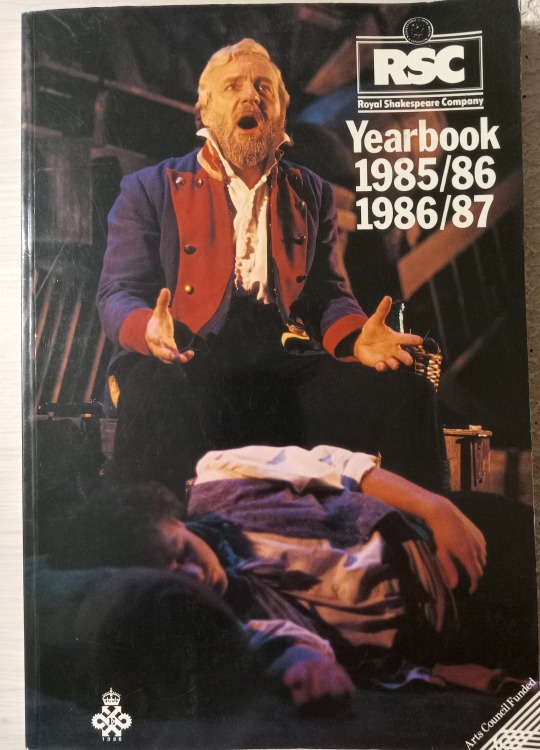
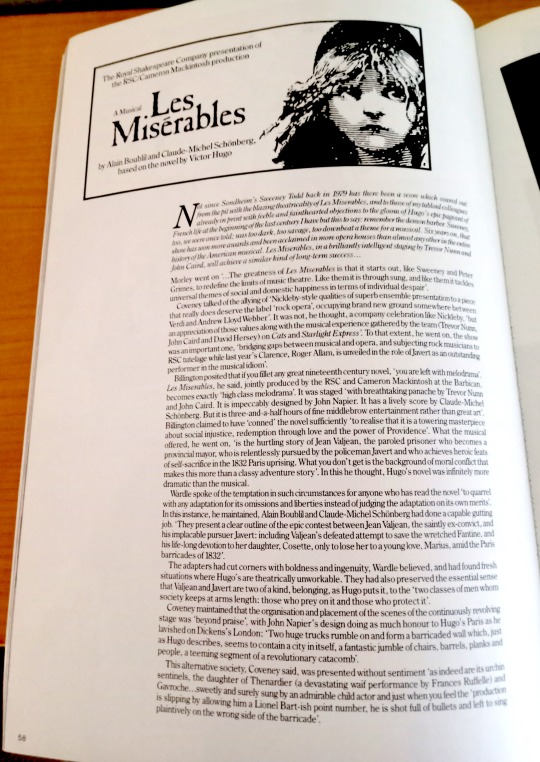
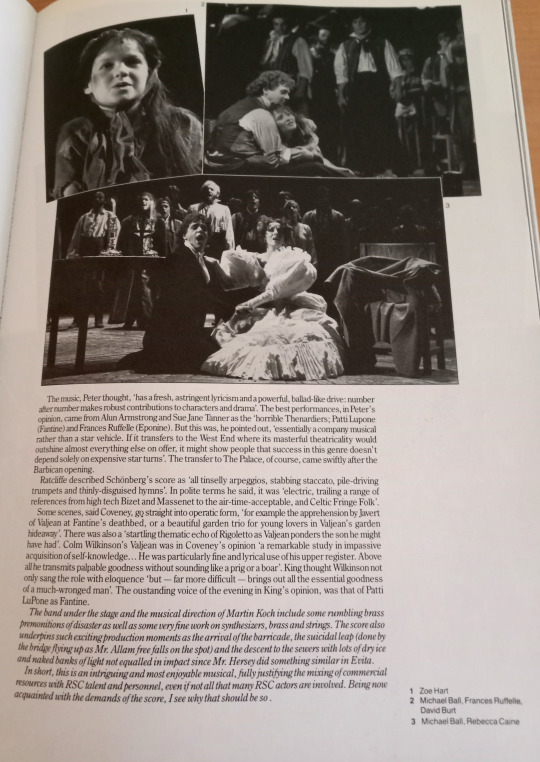
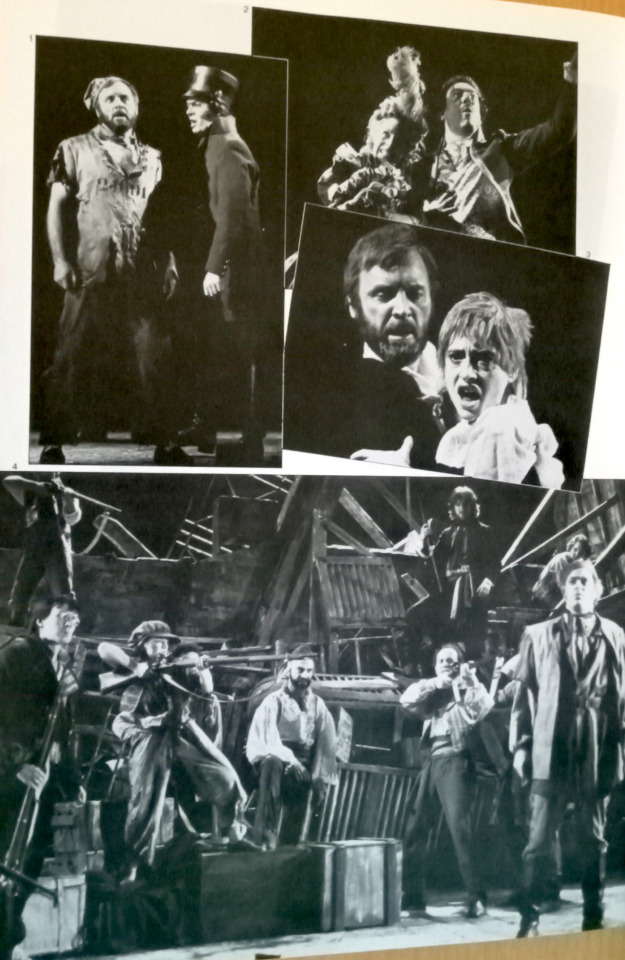
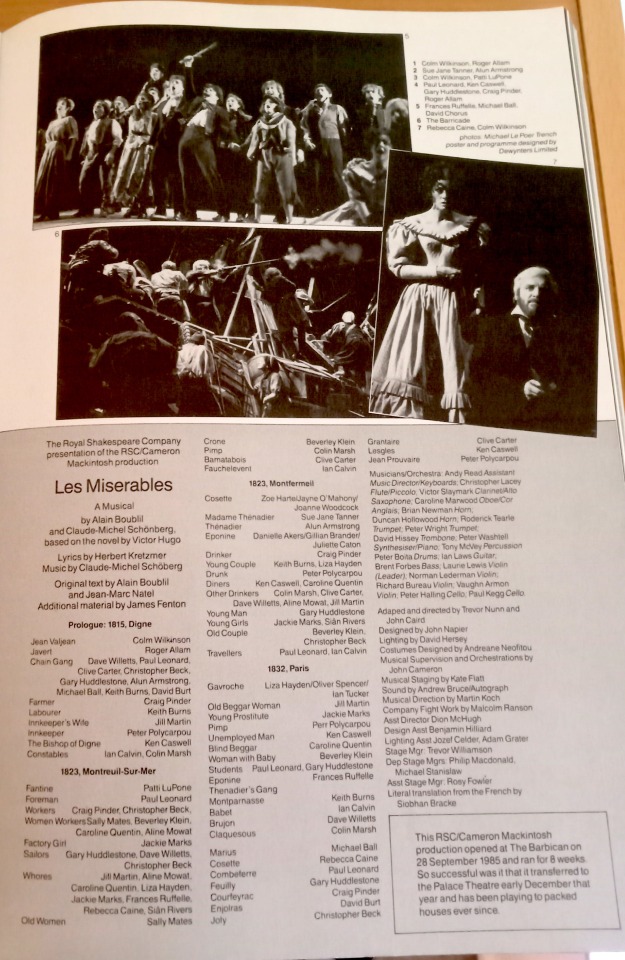
Happy 39th birthday to the London production of Les Misérables (which officially opened on 8 October 1985 at the Barbican Theatre, though previews began at the end of September)! By way of celebrations, scans from the 1985/86 / 1986/87 Royal Shakespeare Company Yearbook, which honoured the success of the Barbican production and its transfer to the Palace Theatre by making Colm Wilkinson and Michael Ball during 'Bring Him Home' its cover stars. The annual RSC Yearbook summarised productions in all of the company's (at the time five) theatres and on tour with production photography and critical commentary from newspapers and other media. Text from the pages above is under the cut below, with bracketed extra information to clarify some references.
Not since Sondheim’s Sweeney Todd back in 1979 has there been a score which soared out of the pit with the blazing theatricality of Les Misérables, and to those of my tabloid colleagues already in print with feeble and fainthearted objections to the show, I have but this to say: remember the demon barber. Sweeney, too, we were once told; was too dark, too savage, too downbeat a theme for a musical. Six years on, that show has won more awards and been acclaimed to more opera houses than any other in the entire history of the American musical. Les Misérables, in a brilliantly intelligent staging by Trevor Nunn and John Caird, will achieve a similar kind of long-term success …
[The Times’/Punch’s Sheridan] Morley went on. ‘… The greatness of Les Misérables is that it starts out, like Sweeney and Peter Grimes, to redefine the limits of music theatre. Like them it is through sung, and like them it tackles universal themes of social and domestic happiness in terms of individual despair.’
[The Financial Times’ Michael] Coveney talked of the allying of ‘Nickleby*-style qualities of ensemble presentation to a piece that really does deserve the label ‘rock opera’, occupying brand new ground somewhere between Verdi and Andrew Lloyd Webber. It was not, he thought, a company celebration like Nickleby, ‘but an appreciation of those values along with the musical experience gathered by the team (Trevor Nunn, John Caird and David Hersey) on Cats and Starlight Express.’ To that extent, he went on, the show was an important one, ‘bridging gaps between musical and opera, and subjecting rock musicians to RSC tutelage while last year’s Clarence [in the RSC 1984 production of Richard III], Roger Allam, is unveiled in the role of Javert as an outstanding performer in the musical idiom.’
[*The RSC's landmark 1980 production of an adaption of Charles Dickens’ The Life and Adventures of Nicholas Nickleby]
[The Guardian’s Michael] Billington posited that if you fillet any great nineteenth-century novel, ‘you are left with melodrama.’ Les Misérables, he said, jointly produced by the RSC and Cameron Mackintosh at the Barbican, becomes exactly ‘high class melodrama.’ It was staged ‘with breathtaking panache by Trevor Nunn and John Caird. It is impeccably designed by John Napier. It has a lively score by Claude-Michel Schönberg. But it is three-and-a-half hours of fine middlebrow entertainment rather than great art.’ Billington claimed to have ‘conned’ the novel sufficiently ‘to realise that it is a towering masterpiece about social injustice, redemption through love and the power of Providence.’ What the musical offered, he went on, ‘is the hurtling story of Jean Valjean, the paroled prisoner who becomes a provincial mayor, who is relentlessly pursued by the policeman Javert and who achieves heroic feats of self-sacrifice at the 1832 Paris uprising. What you don’t get is the background of moral conflict that makes this more than a classy adventure story.’ In this he thought, Hugo’s novel was infinitely more dramatic than the musical.
[The Times’ Irving] Wardle spoke of the temptation in such circumstances for anyone who has read the novel ‘to quarrel with any adaptation for its omissions and liberties instead of judging the adaptation on its own merits.’ In this instance, he maintained, Alain Boublil and Claude-Michel Schönberg had done a capable gutting job. ‘They present a clear outline of the epic contest between Jean Valjean, the saintly ex-convict, and his implacable pursuer Javert: including Valjean’s defeated attempt to save the wretched Fantine, and his life-long devotion to her daughter, Cosette, only to lose her to a young love, Marius, amid the Paris barricades of 1832.’
The adapters had cut corners with boldness and ingenuity, Wardle believed, and had found fresh situations where Hugo’s are theatrically unworkable. They had also preserved the essential sense that Valjean and Javert are two of a kind, belonging, as Hugo puts it, to the ‘two classes of men whom society keeps at arms length: those who prey on it and those who protect it.’
Coveney maintained that the organization and placement of the continuously revolving stage was ‘beyond praise’, with John Napier’s design doing as much honour to Hugo’s Paris as he lavished on Dickens’s London [in Nickleby]: ‘Two huge trucks rumble on and form a barricaded wall which, just as Hugo describes, seems to contain a city in itself, a fantastic jumble of chairs, barrels, planks and people, a teeming segment of a revolutionary catacomb.’
This alternative society, Coveney said, was presented without sentiment ‘as indeed are its urchin sentinels, the daughter of Thenardier (a devastating waif performance by Frances Ruffelle) and Gavroche … sweetly and surely sung by an admirable child actor and just when you feel the production is slipping by allowing a [writer of Oliver] Lionel Bart-ish point number, he is shot full of bullets and left to sing plaintively on the wrong side of the barricade.’
The music, [The Sunday Times’ John] Peter though, ‘has a fresh, astringent lyricism and a powerful, ballad-like drive: number after number makes robust contributions to character and drama.’ The best performances, in Peter’s opinion, came from Alun Armstrong and Susan Jane Tanner as the ‘horrible Thenardiers', Patti LuPone (Fantine) and Frances Ruffelle (Eponine). But this was, he pointed out, ‘essentially a company musical rather than a star vehicle. If it transfers to the West End where its masterful theatricality would outshine almost anything else on offer, it might show people that success in this genre doesn’t depend solely on expensive star turns.’ The transfer to the Palace, of course, came swiftly after the Barbican opening.
[The Observer’s Michael] Ratcliffe described Schönberg’s score as ‘all tinselly arpeggios, stabbing staccato, pile-driving trumpets and thinly-disguised hymns.’ In polite terms he said, it was ‘electric, trailing a range of references from high-tech Bizet and Massenet to the air-time acceptable, and Celtic Fringe Folk.’
Some scenes, said Coveney, go straight into operatic form, ‘for example the apprehension by Javert of Valjean at Fantine’s deathbed, or a beautiful garden trio for young lovers in Valjean’s garden hideaway.’ There was also a ‘startling thematic echo of Rigoletto as Valjean ponders the son he might have had.’ Colm Wilkinson’s Valjean was in Coveney’s opinion ‘a remarkable study in impassive acquisition of self-knowledge … He [has] particularly fine and lyrical use of his upper register. Above all he transmits palpable goodness without sounding like a prig or a boar [bore?].’ [The Sunday’s Telegraph’s Francis] King thought Wilkinson not only sang the role with eloquence ‘but – far more difficult – brings out the essential goodness of a much-wronged man.’ The outstanding voice of the evening in King’s opinion, was that of Patti LuPone as Fantine.
The band under the stage and the musical direction of Martin Koch include some rumbling brass premonitions of disaster as well as some very fine work on synthesizers, brass and strings. The score also underpins such exciting production movements as the arrival of the barricade, the suicidal leap (done by the bridge flying up as Mr Allam free falls on the spot) and the descent to the sewers with lots of dry ice and naked banks of light not equalled in impact since Mr Hersey did something similar in Evita.
In short, this is an intriguing and most enjoyable musical, fully justifying the mixing of commercial resources with RSC talent and personnel, even if not all that many RSC actors are involved.* Being now acquainted with the demands of the score, I see why that should be so. [Morley]
[* The RSC members who appeared in the Barbican production were Roger Allam, Alun Armstrong, and Susan Jane Tanner. Other RSC members at this time joined Les Mis in later companies, among them David Delve, who would replace Alun Armstrong as Thenardier.]
29 notes
·
View notes
Text
in anastasia, it's so obvious from the beginning that anya is the lost princess. in "a rumor in st. petersburg", she panics when she hears a truck backfiring, mistaking it for gunshots. while Dimitri and vlad were not present to witness that, it definitely arouse some suspicion within gleb.
when anya first meets with Dimitri and vlad, she claims that she's waiting for someone in paris. who's in paris?anastasias grandmother, the dowager empress. she also says that she's been in the room in the yusupov palace where the three currently were, where there was a play, with fancy clothing and expensive champagne. before she said that, she had no knowledge of the room they were standing in being a theatre of fhe yusupov palace. as she sings "in my dreams", the amnesiac recalls all the feverish memories she has of her past. she sings "a beautiful river; a bridge by a square; and i hear a voice whisper i'll meet you right there in paris". this shows that anya knows of a bridge in paris, which the dowager empress tells anastasia about during the prologue. she sings "i've seen flashes of fire; heard the echo of screams". how was anastasia's family murdered? assassination by gunfire. of course, there would be screaming and fire. it is also proved historically that anastasia was the second to last one to be assassinated, the first being her younger brother, alexei. that being, she had already witnessed the five murders of her parents and sisters.
during the "learn to do it" scene, there is so much clear evidence of anya being the lost princess that it's almost comical that vlad and dimitri don't realize it. the first one is when she perfectly curtsies, without being taught by vlad how to. the second time is when vlad asks who her best friend is, she replies "my little brother alexei". vlad tells her that she's wrong, to which she replies "i know who my best friend is!" this shows that anya knew things about anastasia's life that wasn't public knowledge. the third time is when she's learning her family tree, and claims that she recalls count sergei's yellow cat, to which vlad says "i don't believe we told her that". at the end of the song, vlad tells her that she did very good, but says it in french, to which anya replies in perfect french. vlad and dimitri hadn't taught her how to speak french. if anya knew how to speak french, then there was no possibility that she was of peasant descent.
when anya is in a meeting with gleb in the communist headquarters, he tells her that his father was one of the guards that killed the romanovs, and that all seven of them were dead, to which anya replies "i don't want to hear it", showing that either she had trauma regarding the assassination, or that she just wanted to live out her fantasy.
when dimitri gives anya the music box, which they had not yet realized was hers as a child, she is able to open it while he cannot. he is confused at this, and is amazed at the fact that anya knows the song that it plays. while she sings "once upon a december", the ghosts of the romanovs are onstage, and dance with her. while this is just the staging, it shows that anya has some sort of connection to them. after the song, she reveals to dimitri that she has a diamond in her pocket, which the nurse at the hospital found seen into her underclothes. when the romanovs were being taken to the cellar where they would be assassinated, they were under the influence that they were being taking to e new location, so empress alexandra of russia, anastasia's mother, urged all the girls to put their expensive jewelry into their underclothes. the diamond gives proof that anya had some value to her name in the past, without blatantly revealing that she was the grand duchess anastasia.
during the scene on the train, communist officers board asking for people who are traveling illegally, which are anya, dimitri, and vlad. anya panics and dimitri assures her that it's all going to be okay. anya says to him "that's what the soldiers said when they were pointing their guns at us". this intrigues dimitri, and he asks anya more. she says "they said they were taking us somewhere safe. toby’s little heart was beating against mine. ‘they’re decent men,’ I told him. ‘they won’t harm us’." of course it's weird that anya is saying all this, but dimitri, amidst distraction, brushes it off, telling anya that she's taking this to far, not realizing that what she's saying is her actual experience.
during "crossing a bridge", anya stands of tsar alexander iii bridge, which is the one the dowager told her about, the one in her dreams, she just didn't know it yet.
during the scene where anya has a nightmare, it is shown that her nightmare is of her being taunted by the romanovs, along with more superfluous russian nobles. when dimitri comes in to comfort her, he tells her about how he, as a child, fell in love with anastasia, yet never believed he could be with her. when anya is singing, the sings "i tried not to smile; but i smiled; and then, bowed". dimitri is shocked, because while she was aware he had bowed to someone once, she was unaware that that person was anastasia. that is when they both realize that she is the grand duchess anastasia, and that the childhood crushes were finally reunited.
during the ballet, the dowager empress sees anya, and sings "see that girl; could it be?" showing that even she thinks it might be anastasia, but doesn't want to believe it. after the ballet, anastasia goes into the interview with the dowager, to which she is immediately dismissed and branded a fraud. now anya is upset at dimitri, because she thinks that she was always just a pawn in his scheme to get the reward money from the dowager empress.
when the dowager goes to anya's hotel to give her a second chance, she interviews her, asking questions such as "what was your mothers full title as empress of all russia?" anya only gives sentimental replies to these questions such as "she was mama to me. she was mama to all of us." the dowager is at first unpersuaded, until anya tells her that "my nana was the most loving woman imaginable." the thing that set this aside from the rest of the girls trying to be anastasia is that anya used "nana", while everyone else believed her to be "grandmama". anya can also recall the very specific scent that the dowager would always wear. orange blossom from sicily, that came in a box of polished inglewood. it is the final revelation when anya shows the dowager the music box, which was a gift that the dowager had given anastasia, right before the assassination. this finally reunites the dowager empress with her long-lost granddaughter.
during the press conference scene, anya is reintroduced with count leopold, and upon meeting him, says "count leopold, with your dyed hair, powdered face, and vodka breath. no wonder my parents laughed at you behind your back," a statement which the dowager confirms to be true.
when gleb finally catches up to anya, during "the neva flows/still reprise", he holds her at gunpoint, believing that all the romanovs must be dead. at first, he doesn't believe that she is anastasia, until she attests to that, making gleb having to shoot her. while she is terrified, she doesn't want to seem weak to gleb, so when he asks her "for the last time, who are you?" she responds "i am the grand duchess anastasia nicolaevna romanov. gleb cannot do it, so he drops the gun, and allows anya to go.
dimitri, while leaving paris, accepts the fact that anya and him cannot be, while anastasia disagrees. anya chooses being with dimitri over being anastasia, and while remains in contact with the dowager, lives with dimitri, and the reward money for anastasia's return is given to charity.
#anastasia#anastasia musical#anastasia romanov#romanov#musicals#theatre#theatre kid#dimitri anastasia#vlad popov#dowager empress#russia#history
23 notes
·
View notes
Text
in my mind palace lestat’s accent was so american in 2x07 bc he wanted to remove himself from paris and the coven as much as possible. he’s not From Here he’s not With Them.
there’s something in there too about the rise of american film stars post ww2 and this super heightened idea of stardom really coming into play, and that being a super american thing at the time. lestat, who dreamed of becoming an actor, channeling these untouchable, new century celebrities kind of Does make sense. but idk how to articulate it all LMAO.
i’m just very much thinking about performance and how acting changes for the stage vs the screen, and how it’s all changed over time. the theatre using this new technology but using this old style of overdramatised commedia-esque acting that lestat was doing back when he was mortal and kind of merging those two worlds. and enter the old world vampire, who’s jarringly out of his element in a setting that is So Familiar. what’s familiar to him doesn’t matter. he’s not performing for himself. what’s familiar to the audience? the white blond haired blue eyed american film stars. so he plays That role
#auroraposting#idk i always think about performance when i think of lestat#it’s too early in the morning here for me to be coherent or intelligent abt anything this is Just a shitpost thought dump#he’s a good mimic!! like santiago!! who i think wants to be lestat/is jealous of him but that’s a whole other thing ngl#so he’s playing the role of the untouchable american film star! and it somehow feels like the patriarchal role from s1 again#just in a new dressing#idk i’m just saying words at this point#interview with the vampire#iwtv spoilers#interview with the vampire spoilers
14 notes
·
View notes
Text
My journey is all mapped out: a two-week Dracula tour of Europe

A fun fact about me is that I enjoy planning holidays that I have no intention of taking. So, if I had two free weeks and more money than I actually do, here's the Dracula-inspired journey around Europe that I might consider.
(Spoilers under the cut)
Days 1-3: Whitby

This is the opportunity to visit all the key Dracula locations, from a coastal walk to Robin Hood's Bay to gazing out over the village and the sea from Mina and Lucy's favourite spot in the graveyard of St Mary's.
In non-Dracula things, Whitby Goth Weekend happens twice a year in April and October. I recommend the Magpie Café for fish and chips.
Day 4: travel to London

Most of the long train journeys in this plan are delightful overnight sleeper services that will make you feel like you're right there with Jonathan and Mina rattling across Europe. Unfortunately, the journey from Whitby to London is not one of them.
Services are infrequent and the journey takes a solid 5 hours. But the start, where you go very very slowly through the beautiful North York Moors, isn't too bad.
Days 5-7: London

There's a whole heap of things to see in London on a theme by either Dracula or Bram Stoker:
The Lyceum Theatre, where Bram Stoker worked for 27 years
The various houses that Bram Stoker lived in
Golders Green Crematorium, where Bram Stoker's ashes can be visited by appointment
Assorted Dracula settings, such as those the Harkers visited on their London day trip
I'd also suggest a visit to Highgate Cemetery, which may have been part of the inspiration for Lucy's tomb (pop in on Karl Marx and Douglas Adams while you're there), and the British Library for general literary joy.
Exeter is a 2.5 hour train journey from London, so you could also go there, either overnight or for a speedy day-trip, if you're a completist. But personally I'd skip it and spend the time going to see the Lion King at the Lyceum or a Shakespeare play at the Globe instead.
Day 8: Paris

The characters in Dracula take a number of different routes to get across Europe, but I've gone with the route that the Crew of Light take as they go to hunt Dracula down in his home.
That means following the Man in Seat 61 guide for travelling from London to Romania by train, taking an early Eurostar to get yourself to Paris. You'll only have a few hours in Paris before the evening sleeper train, but it should be enough to visit Père Lachaise Cemetery, where Oscar Wilde is buried.
Day 9: Vienna

You'll arrive in Vienna around 10am, then have the day to spend there until another evening train. Personally, I'd spend the time visiting the Hofburg Palace and Sisi Museum; Empress Elisabeth (Sisi) of Austria was famous in the late 19th century and her tragic life story feels fitting for a Dracula tour.
Yes, this plan involves fast trains crossing multiple European countries without much of a breather. Just like they do in Dracula :)
Day 10: Cluj-Napoca

Note: I've visited all the other destinations in this guide, but never been to Romania, though I'd really like to go to Cluj in particular. So from this point on, this is based on googling, not first-hand knowledge.
Cluj, referred to by the German name of Klausenburg in Dracula, is the unofficial capital of Transylvania. Your sleeper train from Vienna should get there around 8.20am, in time to hop on a tram to the Old Town's cluster of breakfast places. I've been told that Cluj is a lively, student-y city with great nightlife and festivals.
Days 11-14: Romania

Time to explore Romania! At this point there's a decision to make. On the one hand, there's strict adherence to the settings of Dracula, in which case you'll want to head to Bistrița, or maybe even extend your journey on to Varna or Galați.
On the other hand, you could go more on vibes. In which case, hire a car to drive through the remoter parts of Transylvania, then turn south to Bran Castle, which has very little actual connection to Dracula but certainly looks the part.
-------
In the unlikely event that anyone actually does this journey off the back of this post, please let me know how it goes. I'd be so thrilled to hear about it!
44 notes
·
View notes
Text
Some speculation for what's to come based on the OST* and my own perception and yearning
EPISODE 1
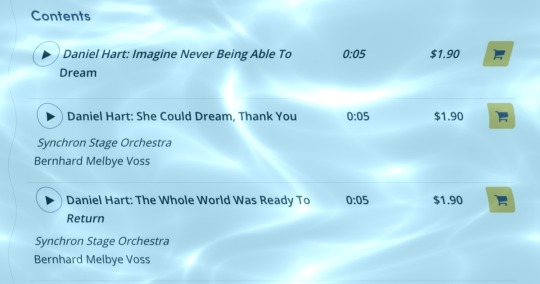
Not so much to guess about this one. The opening track and how it is used to introduce Delainey's Claudia is one of the most spectacular pieces of cinematography that I've seen in my entire life
EPISODE 2
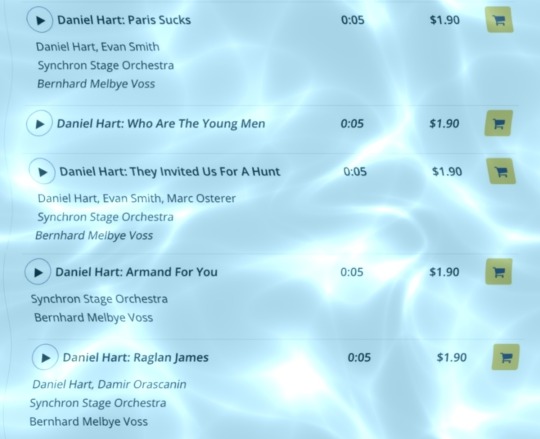
We know which scene Paris sucks belongs to since we've already seen it in the trailers so it makes sense for it to be at the begining of ep. 2.
I speculated that Who are the young men could be related to Lestat and Nicolas and their portraits hanging in the theatre. But it can also be about Loustat first meeting and even the brave men they met at the park (cruising-meet cute confirmed around min 21:00)
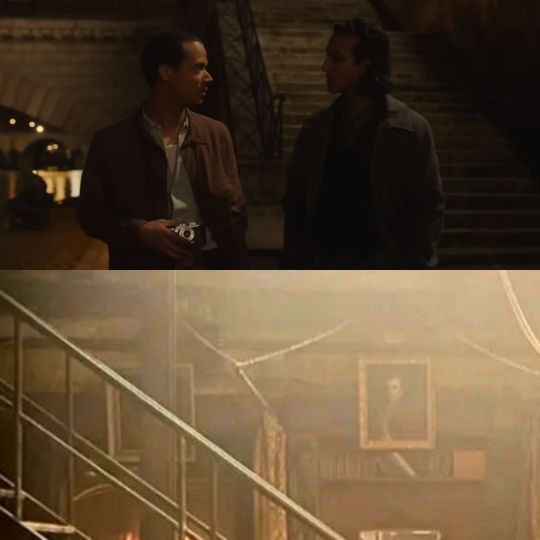
They invite us for a hunt is def the slaughter scene at the palace after the motorbikes and Armand for you could be the moment Armand finaly joins the interview (meaning, Daniel paying attention to him finally) by the end of the episode.
Included Raglan James in ep 2 cause I wanna see Justin Kirk asap but he might as well appear at the begining of ep 3.
EPISODE 3

The 1700s flashbacks are said to happen at the beginning of this ep so The fourth great law could be an introduction to Armand as a coven master in both the 1940s and 1700s and A vein winding through paris sounds like something Armand would say to describe the city and the time. This is when Arlecchinostat is supposed to happen so there should be some remarkable track that didn't make to the OST
I don't like windows when they're closed we know is Claudia's debut performance so wouldn't it be beautiful if we hear it right after Lestat's 1700s show?
Amadeo... I don't even know how to make sense out of this one. I'm just getting ready to be stabbed through the heart and that's it
EPISODE 4
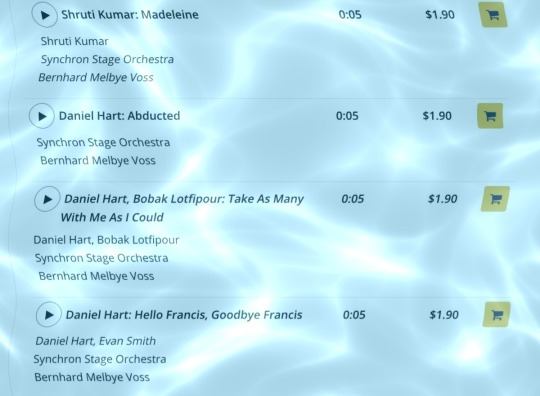
This episode is when Caludia meets Madeleine so most of the tracks may have to do with it and Madeleine as a character.
Hello Francis, Goodbye Francis I think is referring to the Francis Bacon tryptic
EPISODE 5

First time in new orleans sounds like a way to introduce the first interview.
I didn't know it was a gift I don't really know how to explain it but since it's probably in episode five (unless it isn't) something about someone being too young and stupid to realise something is important and what Eric said about Daniel reading something from one of his books that didn't know what he meant when he wrote it. Something...
EPISODE 6

Most of these tracks will probably have to do with theatre performances.
Ladies And Gentlemen as in something Santigo would say; Jardin de Satan might be some of the plays Nicolas wrote.
Come To Me Again it is a performance on its own**
Annika is probably the girl they torture on the stage and Le Bucheron and Woodcutter... a lot of foreshadowing (Le bucheron could even be a pun in French although I don't know enough French to be sure). We have also seen a play about a woodcutter in one of the trailers
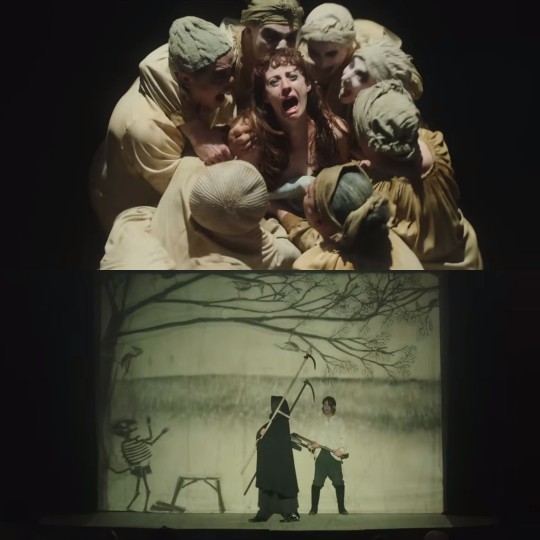
EPISODE 7
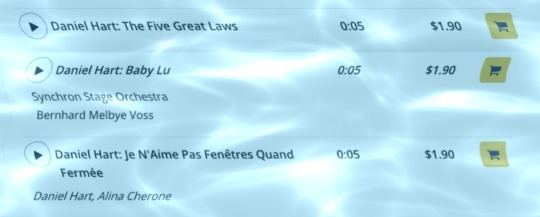
The Five Great Laws for this episode since it is probably going to be The Trial and we know Baby Lu is Claudia's (unfortunate?) theatre persona
My gut tells me that Je N'Aime Pas Fenêtres Quand Fermée will play at the end titles of the episode, in contrast with the atrocities that might have happened previously
EPISODE 8
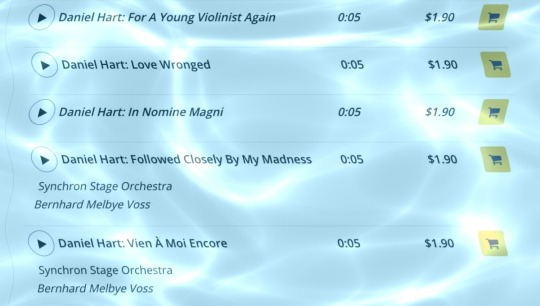
We know that Nicolas should have already showed up at some point between ep1 to 6 so For A Young Violinist Again being at the bottom of the list can only mean that we will see him once again. Something tells me it will be painful and maybe the first approach to authentic Nickistat.
Love Wronged could be applied to almost every relationahip in the show
In Nomine Magni. Who could possibly say a line like this in Latin so close to end of the season?
Followed Closely By My Madness has Nicolas de Lenfent written all over it again
Vien À Moi Encore sounds perfect for a dramatic clifthanger, maybe even Lestat coming back to Louis
*Considering always that the titles are in order of appearance as they were for the S1 OST
**Unlike Come To Me on Rue Royal that goes at the bottom as a bonus track, I doubt we will actualy hear it *in* the show but we will see
7 notes
·
View notes
Text

Rosario Guerrero als Carmen
Artist: Friedrich August von Kaulbach (German, 1850–1920)
Date: c. 1908
Medium: OIl on canvas
Rosario Guerrero, Spanish Dancer
Rosario Fernández Guerrero (born about 1880 – died 1960s) was a Spanish dancer and pantomimist with an international career. Although she was not a singer, she is most often associated with the role of Carmen.
Guerrero danced in Paris and London as a young woman. She danced a ballet version of Carmen in 1903 in London at the Alhambra Theatre. "I reveled in it," she told an interviewer, "I felt that I was Carmen, and do you know, I verily believe that my Don José was now and again really afraid of me." She danced in New York in 1903 and 1904, appearing in The Rose and the Dagger and The Red Feather. In 1905, she was in London again, in a pantomime called The Nightmare with music by A. Porinelly, at the Palace Theatre.
In 1906 there were reports that she was hospitalized in Vienna in 1906, found "violently insane" from "excessive dancing". She performed pantomime shows in London in 1908, in New York and Chicago in 1909, and in other American cities including San Francisco and Indianapolis in 1910. She owned a "small estate" in France.
Guerrero was described as a "famous beauty" in 1908. She posed for a series of portraits by German artist Friedrich August von Kaulbach, who considered them among his best work. Arthur Kampf's celebrated 1906 canvas, Spanische Tänzerin is similarly believed to be a portrait of Guerrero.
#portrait#spanish dancer#female#rosario guerrero#dancer#costume#seated#tambourine#hat#woman#famous#beautiful#friedrich august von kaulbach#german painter#browns#yellows#german art#spanish culture#oil on canvas#20th century painting
2 notes
·
View notes
Note
What’s Belle and the fam got him for his birthday this year?
sorry it took me so long to answer this my brain just would not cooperate with this particular question. ANYWAY:
my mind keeps going to the theatre. every time. i think maybe they made plans to go to a performance he really loves. maybe hamlet or maybe something else
could also be that his kiddos put together their own little production and performed it for him and the rest of the fam. which they are often prone to do. very little women of them
adam also reaaallyyyy likes the opera, so i think he and belle go to a performance as well.
beyond theatre, i think his birthday this year was same as always! (wonderful and full of love!!)
there’s always a ball, because he loves a place where he can dress in his favorite outfit and dance with his wife
the ball is usually at their palace in paris, their home away from home, and depending on the kiddos’ ages, they may be there too. (i mean, they’re definitely IN PARIS with adam & belle. i more meant whether or not they attend the BALL depends on their ages)
anyway, i was also thinking about the fic i posted today, that’s his 24th birthday (irrelevant, really, other than the fact that he’s such a young baby) (yes i know i am currently 24. i am aware of my baby adultness) i was thinking about how he & plumette gush about the new suit he’s wearing, and how excited he is to wear it for the ball tonight. it made me imagine a conversation he & belle had earlier in the day, when he was either just about to change into it, or had just done so. and belle suggests that maurice should paint his portrait wearing it, since he loves it so much.
and this is kind of a big deal to him, because he hasn’t had an individual portrait of himself done since they were first coronated. and up until now he really kept insisting on no singular portraits of himself — only ones with belle (and the baby, since at this point, they have a baby!!!) but belle suggests this and he’s like huh. i guess that would be kind of cool. but also i don’t NEED a portrait !!! it’s fine !!!
and belle tells him it’s okay to want a portrait of yourself sometimes. it doesn’t mean you’ve fallen back into your old vain ways. think of it more like you want to remember this suit you love so much!
and well, anyway, i think adam agreeing to that portrait was a good step for him :) so that also happened on his birthday (making that choice, not the actual portrait, of course)
the day probably ended the way every birthday ends for him these days: dancing and laughing with his wife, holding her hand as they return to their bedroom in the small hours, kissing her and kissing her and kissing her… because he’s just so darn happy to live another year.
#thank youuuu :)#i’m a couple hours past midnight so not technically his birthday anymore :-( but it’s WAY past that for you so it’s moot lol#today was an odd day#but i know it was wonderful for him :’)#adam#batb headcanons#batb 2017#thavron#answered
4 notes
·
View notes
Text

Grand Staircase of Palais Garnier, Paris. 1875.
The Palais Garnier (Garnier Palace), also known as Opéra Garnier , is a historic 1,979-seat opera house at the Place de l'Opéra in the 9th arrondissement of Paris, France.
It was built for the Paris Opera from 1861 to 1875 at the behest of Emperor Napoleon III. Initially referred to as le nouvel Opéra de Paris (the new Paris Opera), it soon became known as the Palais Garnier, "in acknowledgment of its extraordinary opulence" and the architect Charles Garnier's plans and designs, which are representative of the Napoleon III style. It was the primary theatre of the Paris Opera and its associated Paris Opera Ballet until 1989, when a new opera house, the Opéra Bastille, opened at the Place de la Bastille. The company now uses the Palais Garnier mainly for ballet. The theatre has been a monument historique of France since 1923
Photographers: Merike Joosep as posted on Ancient Wonders in Archeology, Art History, and Architecture
Thank you FB @Spectacular World Places
#parislife#parisian style#paris opera house#paris france#palais garnier#a classical life#classical music#art#18th century#classic#classical history#classical art#classical musician#classical composer#classical
4 notes
·
View notes
Text

Camille Monfort "The Amazonian Vampire" by Ruth Elizabeth Stiff via vocal.media
(1869 - 1896)
She was young, beautiful and enchanted audiences with her voice. She was called “The Amazonian Vampire” because of her pale features and late-night walks. Rich gentlemen desired her and their wives were atrociously jealous of her beauty.
She was Camille Monfort.
Camille was born in 1869, in France, and her father was Henri Monfort and her mother was Marie Monfort. Her father, Henri, was a French diplomat and the consulate-general of France in Belem, the capital state of Para in Brazil. Her mother, Marie, was a French Aristocrat who was related to the Royal family of Orleans. It’s safe to say that Camille enjoyed a privileged upbringing.
In 1876, the family moved to Brazil. Camille’s two older brothers, Louis and Charles, followed their father into a diplomatic career. The family were Roman Catholic. Not much is recorded about her education, but with this kind of lifestyle, Camille was sure to have a governess, learning about the Brazilian culture and its history.
Camille never married, which is a surprise as she was very beautiful, standing at 5 feet 5 inches tall and having a ‘decent’ waist. Many admired her free spirit and her ‘independent’ aura. However, despite all of this, Camille lived a short life, interesting but short. Camille lived by her own rules.
She had a ‘notorious’ love life, having affairs with married men, including barons, politicians, journalists and diplomats. No doubt, with her father being the consulate-general of France, Camille’s world was opened up to meet many people, men and women.
Camille preferred her life in the theatre, being an outstanding opera singer, attracting large audiences with her performances. This profession gave her freedom to have her own luxurious lifestyle, although her financial net worth is not recorded.
As very little is actually “known” about Camille, her life has been ‘open’ to much speculation and mystery. She has become a subject of fascination and curiosity. The ‘tales’ that have emerged over the years make us believe that Camille was a unique and interesting person.
It was ‘believed’ (for example) that this powerful opera singer had the habit of indulging in champagne baths. People believed that Camille would dance through the streets under the afternoon rain. These stories got out of hand, however, because people started to ‘believe’ that this young woman was a vampire, and that Camille would hypnotize her unsuspecting victims with her mesmerizing voice. Her pale complexion only encouraged these wild rumours, which were possibly spread by the jealous wives of the husbands she was said to have had affairs with.
It is true that people would faint during her performances but instead of her hypnotizing the person, it was probably because of the strong emotions that her singing would evoke in the audience.
‘People’ believed that Camille could communicate with the dead, and materialize their spirits in dense ethereal mists of ectoplasmic matter, which the young woman would expel from her body during a mediumistic session. Undoubtedly, this was the start of the Spiritualist movement in Brazil, which was practiced in the palaces of Belem by mysterious cults.
Whatever the truth is, there was an outbreak of cholera by the end of 1896, which swept through the city of Belem, and it took Camille’s young life. Camille was only 25 years of age when she died and she was laid in the Cemetery of Solitude in Batz-sur-Mer, France.
During her young life, Camille was not only a very talented opera singer who studied classical music at the Conservatoire de Paris, but she could also speak Italian, German, English and Portuguese. She learnt to play the piano, violin and the guitar. When she was performing, Camille travelled Europe and performed in several theatres and salons. Her talent and beauty became legendary for the time in which she lived. She had an independent and rebellious spirit, dressing in the most fashionable clothes of the time, some of the dresses were thought to be quite provocative. Camille would smoke, ride horses and drive the newly invented motor car. Her lovers showered her with gifts but Camille never settled down with any one of them.
Camille Monfort’s ‘legend’ has inspired many works of art and literature, novels, poems, as well as songs, paintings and even the odd film or two. Even today, Camille is remembered and revered by people who visit her grave to mark their ‘respect’ for “The Amazonian Vampire”.

Camille Monfort, The 1896 Legendary Tale of "The Amazonian Vampire”. By Victor Amah via vocal.media
In 1896, Belém became rich by selling Amazonian rubber to the world, making the farmers overnight millionaires who built their rich mansions with European materials, while their wives and daughters sent their clothes to be washed in the old continent and imported mineral water from London for their baths.
The "Theatro da Paz" was the center of cultural life in the Amazon, with concerts by European artists. Among them, one especially caught the public's attention, the beautiful French opera singer Camille Monfort (1869-1896), who provoked indescribable desires in the rich gentlemen of the region and atrocious jealousy in their wives due to her great beauty.
Camille Monfort also caused indignation for her behavior, which was free from the social conventions of her time. Legend has it that she was seen half-naked, dancing in the streets of Belém while refreshing herself in the afternoon rain. Her solitary night walks also aroused curiosity when she was seen in her long, black, and vaporous dresses under the full moon, on the banks of the Guajará River, towards the Igarapé das Almas.
Soon, rumors began to circulate around her, and malicious comments were made. It was said that she was the lover of Francisco Bolonha (1872-1938), who had brought her from Europe and that he bathed her with expensive imported champagnes in the bathtub of his mansion.
It was also said that she had been attacked by vampirism in London, due to her paleness and sickly appearance, and that she had brought this great evil to the Amazon, having a mysterious craving for human blood, to the point of hypnotizing young women with her voice in her concerts, making them fall asleep in her dressing room so that the mysterious lady could reach their necks. Curiously, this coincided with reports of fainting in the theater during her concerts, which were simply explained as the effect of the strong emotion that her music produced in the audience's ears.
It was also said that she had the power to communicate with the dead and materialize their spirits into dense ethereal mists of ectoplasmic materials expelled from her own body in mediumistic sessions. These were undoubtedly the first manifestations in the Amazon of what would later be called spiritualism, practiced in mysterious cults in Belém palaces, such as the Palacete Pinho.
At the end of 1896, a terrible cholera outbreak devastated the city of Belém, turning Camille Monfort into one of its victims, who was buried in the Cemetery of Solitude.
Today, her tomb is still there, covered in slime, moss, and dry leaves, under a huge mango tree that makes her grave sink into the darkness of its shadow, only illuminated by rays of sun that penetrate through the green leaves.
It is a neoclassical mausoleum with a door closed by an old rusty lock, from which a white marble female bust can be seen on the wide lid of the abandoned tomb, and attached to the wall, a small framed image of a woman dressed in black.
#classical music#opera#music history#bel canto#composer#classical composer#aria#classical studies#maestro#chest voice#Camille Monfort#The Amazonian Vampire#classical musician#classical musicians#classical history#opera history#history of music#history#historian of music#musician#musicians#diva#prima donna
4 notes
·
View notes
Text



ALIX AYMÉ (1894 - 1989)
The Girl with the Golden Eyes, lacquer and gold leaf. Paysage Italien (Italian Landscape) L'enfant qui dort (sleeping child), lacquer on panel.
Alix Angele Marguerite Aymé was born in Marseille, France in 1894. She studied drawing and music at the Conservatory of Toulouse. After graduation, she moved to Paris where she became the student of Nabi Painter Maurice Denis. She collaborated with Denis in the paintings for the Theatre des Champs-Elysees and worked in the Studios of Sacred Art in 1919. In 1921 Aymé moved to Hanoi with her first husband and there she studied the fine art of silk painting and lacquer work. She also studied printmaking and produced numerous etchings and wood engravings. In 1925 she became an art professor in Hanoi at the French Lycee School. In 1926 she returned to Paris and was commissioned to illustrate “Kim” by Rudyard Kipling. In 1930 she returned to Asia to be commissioned by the Royal Family in Saigon to create a series of large scale murals in the palace depicting rural life in Laos. These murals are still considered national treasures.
Aymé continued to work and travel throughout Indochina, India and Ceylon. She also painted in China, Japan, and Korea until she returned to Paris in 1945 after her son Michel was executed while her family was imprisoned by the Japanese in an internment camp. While in Paris in the mid-forties, Aymé was commissioned to do the Stations of the Cross for the chapel in Luc-sur-Mer and became close friends with the master painter and printmaker Foujita. In 1962 Aymé traveled to Brazzaville, Congo and continued to work until she died in 1989 on her 95th birthday. Her work can be found in the collections of the Louvre and the Musee des Trente in Paris, the Musee des Beaux-Arts in La Rochelle, and the Evergreen Museum at Johns Hopkins University in Baltimore as well as private collections in the United States and Europe.
#alix aymé#alix ayme#women in art#women artists#portraits#landscapes#portraiture#landscape#french artist#lacquer painting#art history
4 notes
·
View notes
Text
FITFWT23: FASHION
NORTH AMERICA
@fashionlouist bracket winners! all the looks

Via LWTHQS
26 May - Mohegan Sun Arena, UNCASVILLE CT [Vetements shirt] [Lacoste shoes] [Lacoste polo] [Lacoste track pants]
27 May - Bank of New Hampshire Pavilion, GUILFORD NH [Marni x Carhart shirt] [Adidas shoes]
29 May - Place Bell, LAVAL QC [Palace x Adidas t shirt] [Ahluwalia shirt] [Adidas shoes] [By Parra shirt]
30 May - Budweiser Stage, TORONTO ON [A Bathing Ape shirt]
1 Jun - Blossom Music Center, CUYAHOGA FALLS, OH [Calvin Klein tank top] [Stone Island pants, Adidas Osweego shoes]
2 Jun - Michigan Lottery Amphitheater, STERLING HEIGHTS, MI: [1017 Alyx 9SM T-shirt] [Axel Arigato shoes]
3 Jun - The Icon Festival Stage, CINCINNATI: [Fred Perry polo] [Adidas Osweego shoes] [424 shirt] [Nike shorts] [Nike slippers]
6 Jun - Kemba Live! Outdoor, COLUMBUS OH: [Calvin Klein tank top] [J. Lindeberg pants] [Axel Arigato shoes] [28 OP hoodie] [28 OP shorts] [Adidas Osweego shoes]
7 Jun - TCU Amphitheater at White River State Park, INDIANAPOLIS: [Paul Smith T-shirt]
9 Jun - Saint Louis Music Park, SAINT LOUIS: [Obey knit polo]
10 Jun - Starlight Theatre, KANSAS CITY MO: [Raf Simons t-shirt]
13 Jun - BMO Pavilion, MILWAUKEE: [Fred Perry shirt] [Adidas Samba Og shoes]
15 Jun - Huntington Bank Pavilion, CHICAGO: [28 OP hoodie] [Sergio Tacchini jacket] [Lacoste pants] [Lacoste shoes] [Calvin Klein tank]
16 Jun - The Armory, MINNEAPOLIS: [Vintage Umbro England football shirt] [Pangaia hoodie]
17 Jun - Harrah’s Stir Cove, COUNCIL BLUFFS, IA: [Lacoste shirt] [Adidas shoes] [Y-3 hoodie and shorts] [Adidas shoes]
19 Jun - Denny Sanford Premiere Center, SIOUX FALLS, SD: [Umbro 2004 vintage home shirt]
21 Jun - Red Rocks Amphitheatre, MORRISON, CO: POSTPONED [Nike t-shirt] [Sergio Tacchini shorts] [Nike shoes]
24 Jun - Wamu Theater, SEATTLE: [Calvin Klein white tank top] [Grand Collection pants]
26 Jun - Doug Mitchell Thunderbird Sports Center, VANCOUVER BC: [Burberry shorts] [Ksubi shirt]
27 Jun - Mcmenamins Edgefield Concerts, TROUTDALE OR: [Adidas Jamaica jersey]
29 Jun - The Greek Theatre, BERKELEY CA: [ERL t-shirt]
30 Jun - The Hollywood Bowl, LOS ANGELES: [Stone Island jacket for Hollywood Bowl ad] [Adidas x Wales Bonner jacket] [black mesh tank top]
1 Jul - The Chelsea at the Cosmopolitan, LAS VEGAS: [Palace Skateboards t-shirt] [Adidas Gazelle red shoes]
3 Jul - Arizona Financial Theatre, PHOENIX: [Black Sabbath vintage t-shirt] [Calvin Klein white tank top] [Rick Owens x Champion track pants]
6 Jul - The Pavilion at Toyota Music Factory, IRVING TX: [Devá States t-shirt] [Stone Island swim trunks]
7 Jul - Moody Amphitheater at Waterloo Park, AUSTIN TX: [Tom Ford vest] [Lacoste pants] [Salomon shoes]
8 Jul - The Cynthia Woods Mitchell Pavilion, WOODLANDS TX: [Saul Nash matching set] [Axel Arigato shoes]
11 Jul - St. Augustine Amphitheatre, ST. AUGUSTINE FL: [Burberry shirt] [Umbro vintage shorts]
13 Jul - Hard Rock Live at Seminole Hard Rock Hollywood, HOLLYWOOD FL: [Casablanca Paris polo]
14 Jul - Yuengling Center, TAMPA FL: [Alyx 9SM AAUTS0393FA01BLK0001 ARCH LOGO t-shirt] [Soon To Be Announced t-shirt, Mastermind pants]
15 Jul - Cadence Bank Amphitheatre at Chastain Park, ATLANTA: [soundcheck: Mastermind pants] [Casablanca Paris t-shirt] [Adidas Sprinter shorts]
18 Jul - Ascend Amphitheater, NASHVILLE: [Stone Island sweater for Australia announcement] [28 OP track pants] [Celine polo]
19 Jul - Charlotte Metro Credit Union Amphitheatre, CHARLOTTE NC: [Lacoste pants]
21 Jul - Red Hat Amphitheater, RALEIGH NC: [28 OP pants] [Paul Smith t-shirt] [Stone Island shorts]
22 Jul - Merriweather Post Pavilion, COLUMBIA MD: [Nike England jersey] [Sergio Tacchini shoes]
24 Jul - MGM Music Hall at Fenway, BOSTON: [Stone Island pants] [Salomon shoes]
25 Jul - MGM Music Hall at Fenway, BOSTON: [Andersson Bell t-shirt]
27 Jul - TD Pavilion at the Mann, PHILADELPHIA: [Prada tank top], [CP Company pants], [Thames MMXX polo]
28 Jul - Stone Pony Summer Stage, ASBURY PARK NJ: [Maison Mihara Yasuhiro shirt] [Sunflower Mike shorts]
29 Jul - Forrest Hills Stadium, NEW YORK: [Tom Ford tank top] [Prada pants] [Axel Arigato t-shirt]

outfits courtesy of lbfcult
16 notes
·
View notes
Text
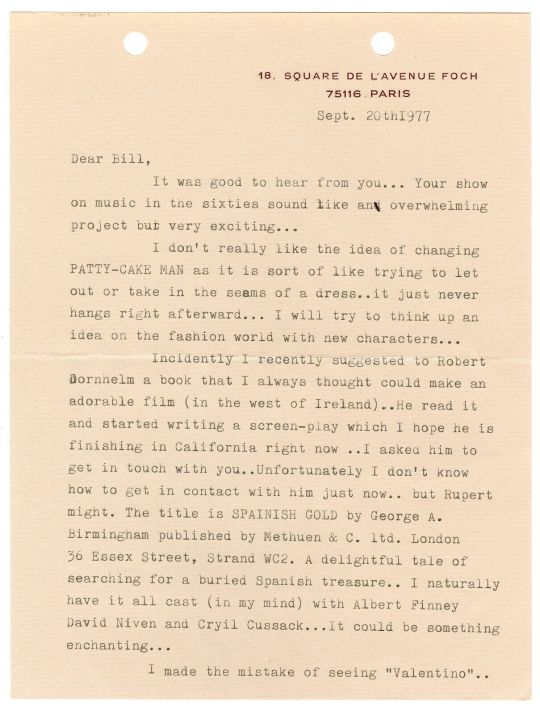
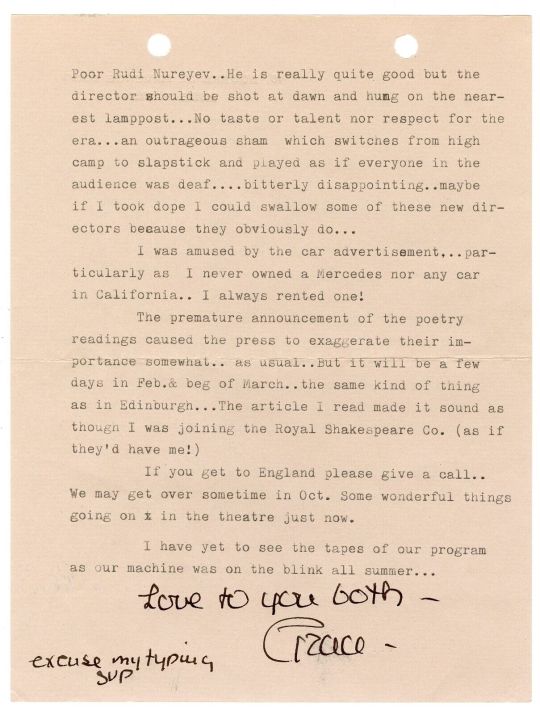
Letter from Princess Grace of Monaco to her friend William "Bill" Allyn dated September 20, 1977, and sent from the Monegasque princely family home in Paris, France (18 Square de L´Avenue Foch. 75116).

Willam Allyn and Princess Grace during the filming of "Once Upon a Time is Now... The Story of Princess Grace" at the Palace of Monaco in 1976.
William Allyn was an actor/producer and friend of Grace’s from her Hollywood days who reconnected with her in the mid-1960s. With her cooperation, he also produced a 1977 NBC documentary on her titled, Once Upon a Time is Now … The Story of Princess Grace.
Letter transcription below:
Sept. 20th, 1977. Dear Bill It was good to hear from you. Your show on music in the sixties sounds like an overwhelming project but very exciting. I don't really like the idea of changing PATTY-CAKE MAN as it is sort of like trying to let out or take in the seams of a dress. it just never hangs right afterward. I will try to think up an idea on the fashion world with new characters. Incidentally, I recently suggested to Robert Dornhelm a book that I always thought could make an adorable film (in the west of Ireland). He read it and started writing a screen-play which i hope he is finishing in California right now. I asked him to get in touch with you. Unfortunately, I don't know how to get in contact with him just now, but Rupert might. The title is SPANISH GOLD by George A. Birmingham published by Methuen & C. Ltd. London 36 Essex Street, Strand WC2. A delightful tale of searching for a buried Spanish treasure. I naturally have it all cast (in my mind) with Albert Finney, David Niven, and Cryl Cussack. It could be something enchanting. I made the mistake of seeing "Valentino". Poor Rudi Nureyev. He is really quite good but the director should be shot at dawn and hung on the nearest lamppost. No taste, no talent no respect for the era., an outrageous sham which switches from high camp to slapstick and played as if everyone in the audience was deaf. Bitterly dissapointing. Maybe if I took dope I could swallow some of these new directors because they obviously do. I was amused by the car advertisement, particularly as I never owned a Mercedes nor any car in California, I always rented one! The premature announcement of the poetry readings caused the press to exaggerate their importance somewhat, as usual. But It will be a few days in February and the beginning of March, the same kind of thing as in Edinburgh. The article I read made it sound as though I was joining the Royal Shakespeare Co. (as if they'd have me!). If you get to England please give a call. We may get over sometime in October. Some wonderful things going on in the theatre just now. I have yet to see the tapes of our program as our machine was on the blink all summer. Love to you both, Grace.
Excuse my typing.
#grace kelly#princess grace#william allyn#william bill allyn#bill allyn#1977#patty cake man#princess grace's letters#letter#typed#handwritten letter#rudolf nureyev#valentino#mercedes#car#spanish gold#robert dornhelm
15 notes
·
View notes
Text
My Theatre Slime Tutorials
Hey i only just realised how many slime tutorials i have so if anyone is willing to trade feel free to message me :) Ones with stars are rarer trades.
⭐ harder to trade for
WANTS:
Nick Payne's Constellations
Crazy For You - West End with Charlie Stemp
Sunset Boulevard
WILLING TO TRADE:
& Juliet - Grace Mouat as Juliet
Angels in America - Proshot (both parts) ⭐
Funny Girl - 2022 (audio with Beanie Feldstien)
Moulin Rouge - Boston
Moulin Rouge - West End 2021 ⭐
Cabaret - West End (Amy Lennox and Fra Fee) ⭐
Crazy For You - Jack Wilcox as Bobby (audio)⭐️
Bare a Pop Opera - LA
Beetlejuice - On Halloween (audio)
Be More Chill - London (At the other palace) ⭐
Dear Evan Hansen - OBC
Dear Evan Hansen - Taylor Trensch as Evan
Death Note in Concert - Lyric (audio)⭐️
Ride the Cyclone - Off-Broadway
Ride the Cyclone - McCarter⭐
Tuck Everlasting - Broadway
Rent - Hope Mill Proshot⭐
Moulin Rouge - Broadway 2019
Harry Potter and the Cursed Child - London 2017
Mean Girls - Renee Rapp
Mean Girls - OBC
Hadestown - 2019
Little Shop of Horrors - 2022 (Evan Smith as Seymour Jana Jackson as Audrey)
Funny Girl - 2022 (audio with Julie Benko)
Dear Evan Hansen - West End (audio with Marcus Harman)
Dear Evan Hansen - West End (audio with Sam Tutty)
Dear Evan Hansen - West End (audio closing night)
Legally Blonde - 2022 (Regents Park open air) ⭐
Company - Broadway 2021
Anastasia - Broadway
How to succeed in Business without really trying - Broadway (with Daniel Radcliffe)⭐
An American in Paris - 2018
Jagged Little Pill - Iris Menas
#musical#musical theater#broadway#west end#slime tutorial#theatre#dear evan hansen#& juliet#legally blonde#hadestown#moulin rouge#ride the cyclone#be more chill
37 notes
·
View notes